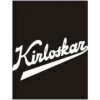Filter interviews by
Shyam Sel & Power Quality Engineer Interview Questions and Answers
Shyam Sel & Power Quality Engineer Interview Experiences
1 interview found
I applied via Referral and was interviewed in Apr 2024. There was 1 interview round.
(2 Questions)
- Q1. What is the least count of micrometre
- Ans.
The least count of a micrometer is the smallest measurement that can be read on the scale of the micrometer.
The least count of a micrometer is typically 0.01 mm or 0.001 mm, depending on the type of micrometer.
It is important to understand the least count in order to accurately measure dimensions using a micrometer.
For example, a micrometer with a least count of 0.01 mm can measure up to two decimal places, while a mic...
- Q2. What is the standard of mill speed of every dia.
- Ans.
The standard mill speed varies depending on the diameter of the mill.
The standard mill speed for a specific diameter can be calculated using the formula: Speed = (Diameter x π x RPM) / 1000
Different mills may have different standard speeds based on their size and purpose
It is important to refer to the manufacturer's guidelines for the recommended mill speed for each diameter
Interview Preparation Tips
Top trending discussions






Interview questions from similar companies

I applied via Referral and was interviewed before Apr 2021. There was 1 interview round.
(1 Question)
- Q1. Maintenance phylosophy
- Ans. Depends on equipment running hour, criticality, availability and standby.
Interview Preparation Tips
- Boe
- Energy manager

Senior Engineer Interview Questions & Answers
Tractors and Farm Equipmentposted on 3 Feb 2022
I applied via Walk-in and was interviewed before Feb 2021. There was 1 interview round.
(1 Question)
- Q1. Sourcing and Vendor development related
Interview Preparation Tips

I applied via Referral and was interviewed before Jul 2021. There was 1 interview round.
(1 Question)
- Q1. Basic knowledge of role based on experience level
Interview Preparation Tips
Less knowledge will result in rejection

Senior Engineer Interview Questions & Answers
Isgec Heavy Engineeringposted on 20 Nov 2021
I applied via Naukri.com and was interviewed in May 2021. There was 1 interview round.
Interview Questionnaire
1 Question
- Q1. They just asked basics que. related to job profile.. seeking confidence..
Interview Preparation Tips

(1 Question)
- Q1. Basic electric questions and PLC programming
(1 Question)
- Q1. Based on your project
Interview Preparation Tips

Senior Engineer Interview Questions & Answers
Action Construction Equipmentposted on 27 Nov 2021
I applied via Walk-in and was interviewed in Oct 2021. There was 1 interview round.
Interview Questionnaire
1 Question
- Q1. Same maintenance question laser machine, welding machine, utility and maintenance work
Interview Preparation Tips

Senior Engineer Interview Questions & Answers
Tractors and Farm Equipmentposted on 21 Mar 2024
I applied via Naukri.com and was interviewed in Feb 2024. There was 1 interview round.
(1 Question)
- Q1. Ask machine knowledge

Quality Engineer Interview Questions & Answers
Tractors and Farm Equipmentposted on 24 Feb 2025
I appeared for an interview in Aug 2024.
(3 Questions)
- Q1. What is the 7QC tools?
- Ans.
The 7QC tools are a set of quality control tools used for process improvement and problem-solving in manufacturing and other industries.
Check sheets: Used to collect and organize data for analysis.
Cause-and-effect diagrams (Fishbone diagrams): Used to identify and analyze potential causes of a problem.
Control charts: Used to monitor process variation over time.
Histograms: Used to show the frequency distribution of a se...
- Q2. What is the 8D methodology?
- Ans.
The 8D methodology is a problem-solving approach used to identify, correct, and prevent recurring problems.
8D stands for 8 disciplines, each representing a step in the problem-solving process
It involves creating a team, defining the problem, implementing short-term containment actions, identifying root causes, implementing permanent corrective actions, and preventing recurrence
Examples of tools used in 8D methodology i...
- Q3. What is the 8QB ? Typs
- Ans.
8D is a problem-solving methodology used in quality management to identify, correct, and prevent recurring problems.
8D stands for Eight Disciplines
It is a structured problem-solving process typically used in the automotive industry
Each discipline represents a step in the process, from defining the problem to implementing long-term solutions
(2 Questions)
- Q1. What about family?
- Q2. Self intro
Any improvement in your industry
Did you profit for any Quality process

(1 Question)
- Q1. What is your experiencce
Shyam Sel & Power Interview FAQs
Tell us how to improve this page.
Shyam Sel & Power Interviews By Designations
- Shyam Sel & Power Supervisor Interview Questions
- Shyam Sel & Power Assistant Engineer Interview Questions
- Shyam Sel & Power Engineer Interview Questions
- Shyam Sel & Power Technician Interview Questions
- Shyam Sel & Power Graduate Engineer Trainee (Get) Interview Questions
- Shyam Sel & Power Mechanical Engineer Interview Questions
- Shyam Sel & Power Store Supervisor Interview Questions
- Shyam Sel & Power Project Manager Interview Questions
- Show more
Interview Questions for Popular Designations
- Quality Inspector Interview Questions
- Senior Quality Engineer Interview Questions
- Quality Controller Interview Questions
- Quality Assurance Interview Questions
- Quality Manager Interview Questions
- Quality Executive Interview Questions
- Quality Assurance Officer Interview Questions
- Quality Assurance Quality Control Engineer Interview Questions
- Show more
Shyam Sel & Power Quality Engineer Interview Process
based on 1 interview
Interview experience
Quality Engineer Interview Questions from Similar Companies
Shyam Sel & Power Quality Engineer Reviews and Ratings
based on 1 review
Rating in categories
|
Engineer
54
salaries
| ₹2.5 L/yr - ₹5.1 L/yr |
|
Assistant Manager
52
salaries
| ₹4.2 L/yr - ₹9 L/yr |
|
Senior Engineer
51
salaries
| ₹3 L/yr - ₹7.2 L/yr |
|
Assistant Engineer
51
salaries
| ₹1.7 L/yr - ₹4 L/yr |
|
Electrical Engineer
29
salaries
| ₹1.8 L/yr - ₹5.2 L/yr |

Thermax Limited

ABB

Tractors and Farm Equipment

Isgec Heavy Engineering
- Home >
- Interviews >
- Shyam Sel & Power Interview Questions >
- Shyam Sel & Power Quality Engineer Interview Questions









